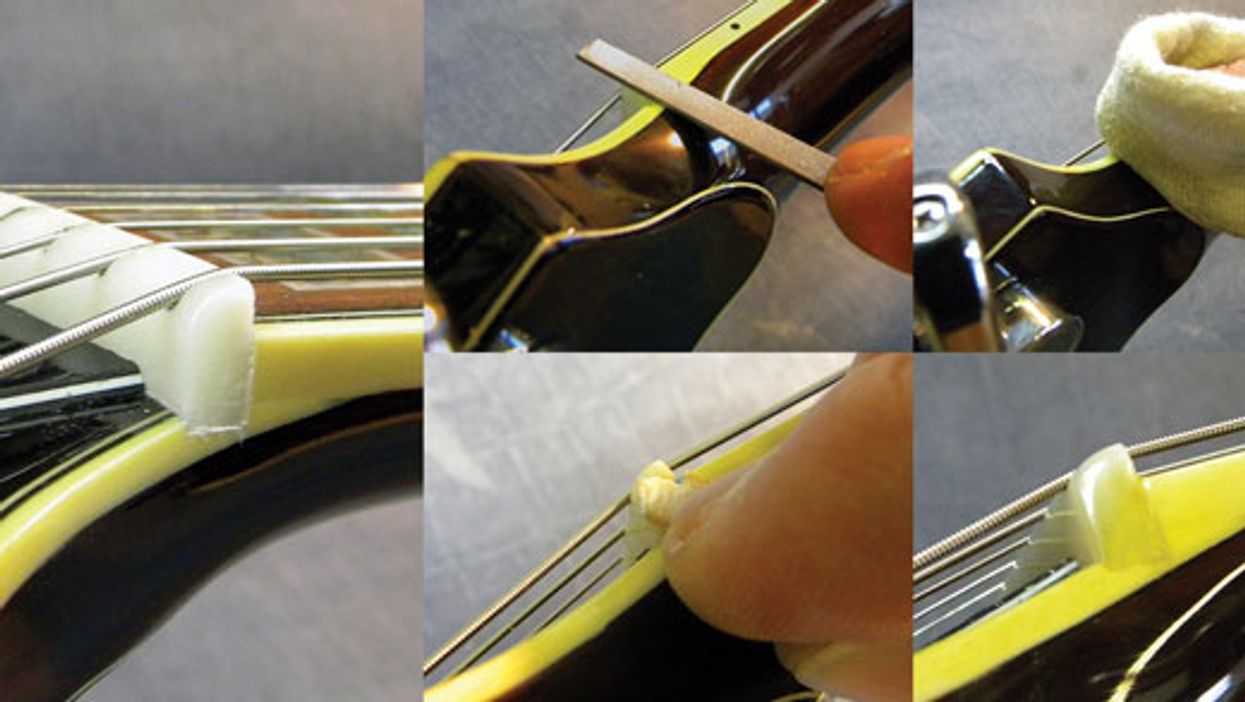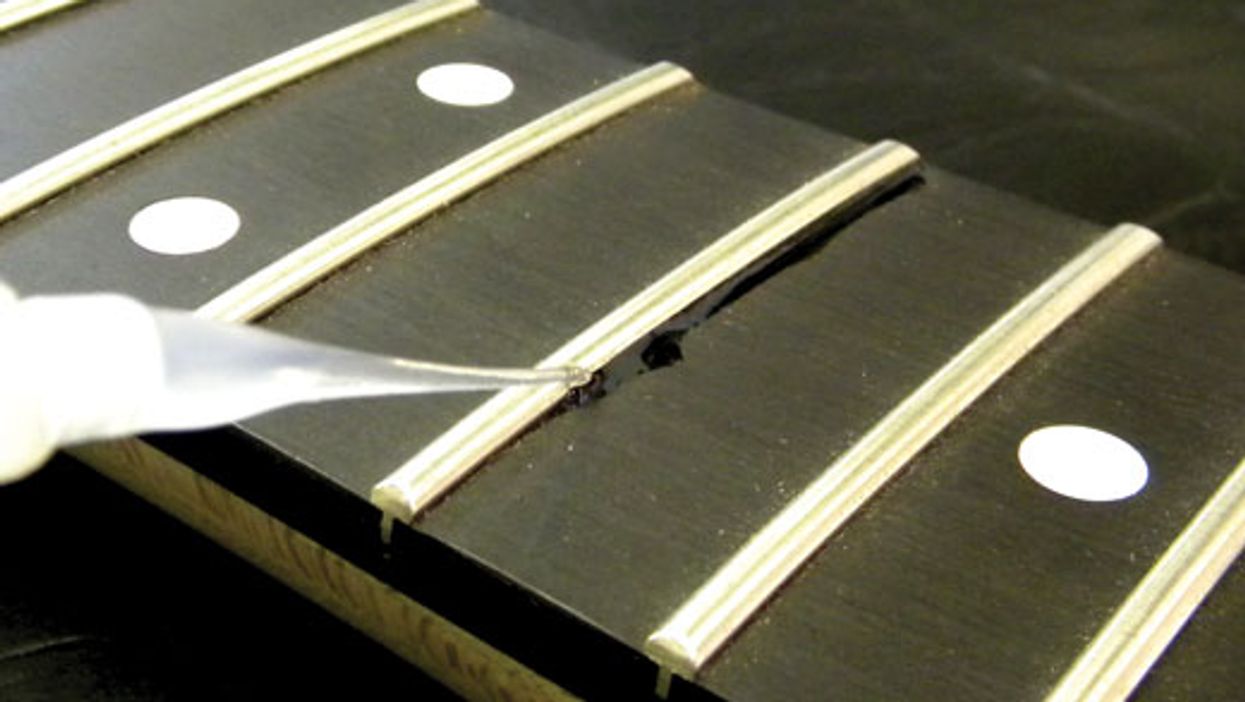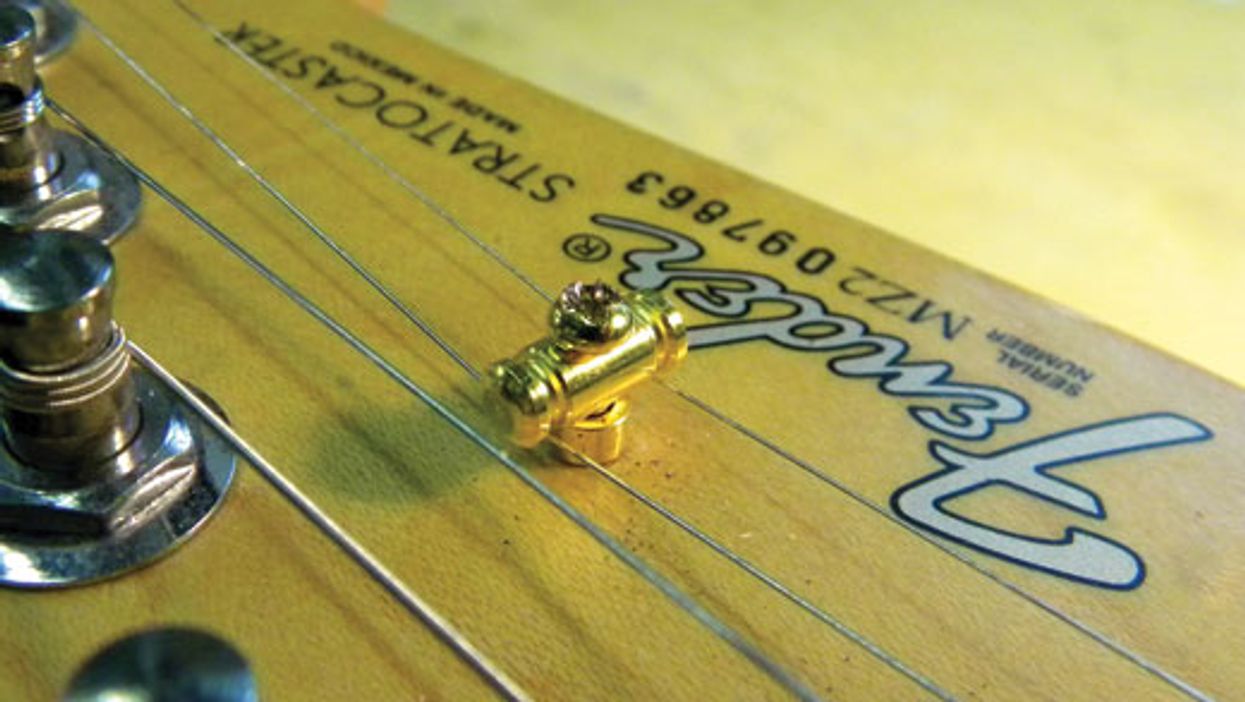During the 25 years I’ve worked on guitars, I’ve had many clients bring in a recently purchased used electric for a setup, only to discover that the axe has serious underlying problems that were not disclosed by the seller. Most guitars you find in a reputable music store have been checked out by the shop’s in-house repair team and are sold at a fair price. But in many cases, instruments acquired from online auctions, pawnshops, or flea markets are not always the “killer deal” they appear to be.
To help you avoid buying a used electric guitar that would cost more to repair than it’s worth, let’s look at some critical things you need to check before making a purchase. These are common problems that can get overlooked when you’re smitten by a flashy paint job or a cool design. (Before you go shopping for a used acoustic, read “Tips for Buying a Used Flattop.”)
Most used electric guitars are going to need some repairs or a setup, and buying a guitar that needs a little work isn’t necessarily a bad deal, as long as you come out ahead when you add bench time and parts to the selling price.
Fit and finish.
The first thing most players notice on an electric guitar is the finish. Normal finish checking doesn’t detract from a used instrument’s value, but stains and discolorations do, so it’s important to inspect the paint or lacquer, which can get damaged by synthetic guitar straps or chemicals (Photo 1). Unfortunately, you can’t simply polish away such flaws if they’ve penetrated the finish.
Refinishing a guitar can be very expensive and actually lowers its value. Most electric guitars are actually worth more “stock and ugly” than “refinished and pretty.” A “refin” guitar is only worth about half of one with a stock finish—even if the original finish is scratched or worn.
Be on the lookout for cracks that go through the finish right down to the wood. A deep crack in the finish can be a sign of separating seams in the body, whether it’s a solid, semi-hollow, or hollow instrument. It’s very expensive to fix such structural damage.
Heads up.
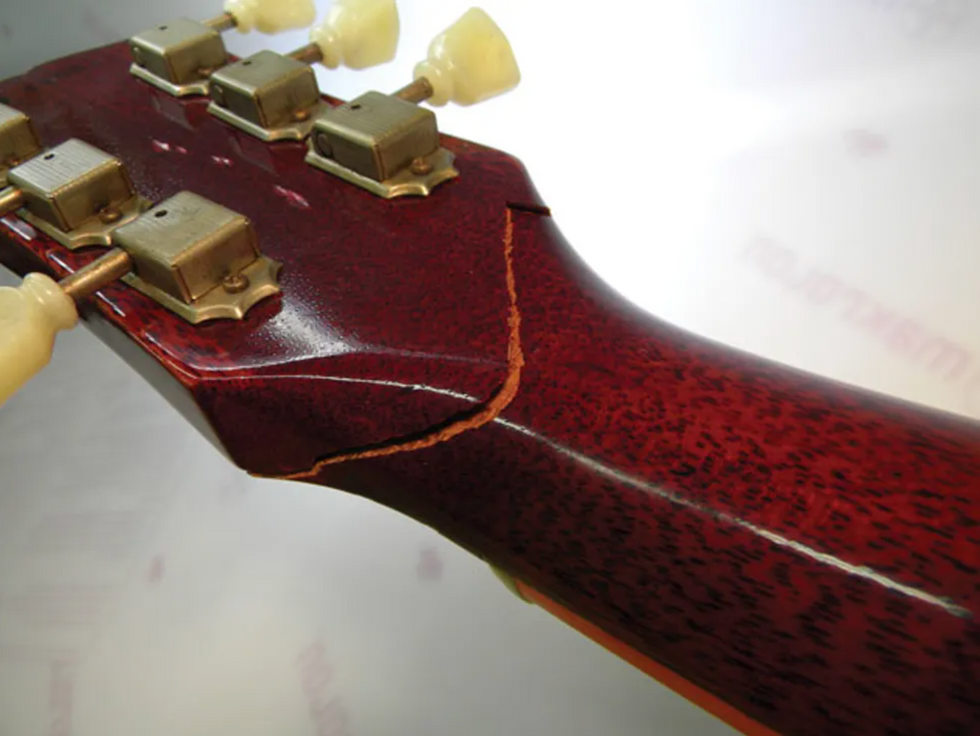
Photo 2
Heads up. Always thoroughly inspect the headstock! The area where the neck transitions into the headstock is vulnerable to damage, and Photo 2 shows what can happen if the guitar is dropped or takes a hit in this area. Look for wrinkles or ridges on and around the headstock—telltale signs of a headstock repair. Even when perfectly repaired, a guitar with a broken headstock is only worth half of one that has never been broken. This can be a game-changer when deciding to buy a used electric.
Fretboard issues.
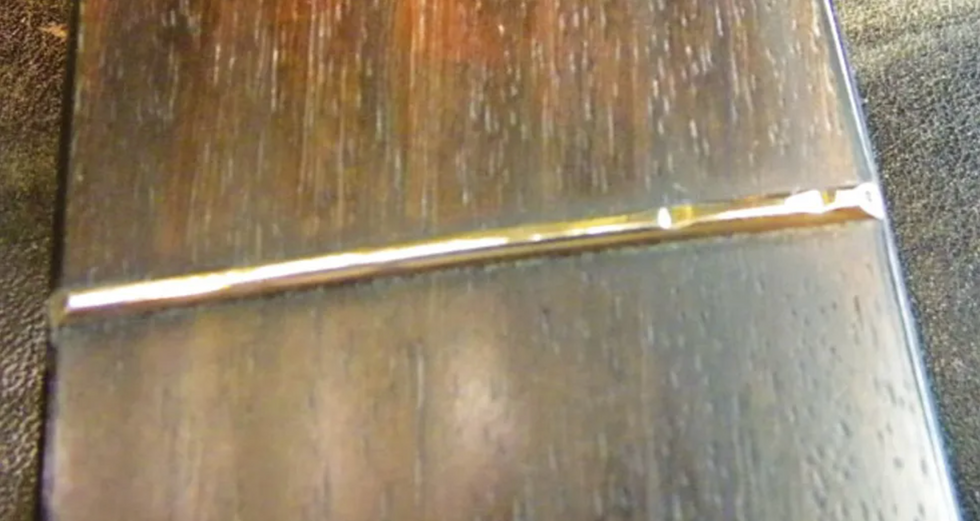
Photo 3
Carefully inspect the frets. Dents or divots cause by string wear (Photo 3), can be expensive to repair or replace. Most professional luthiers charge about $150 for a fret level. A full refret can easily cost $300 to $600, depending on the condition of the fretboard.
If the neck looks consistent from the first to last fret, and the truss rod allows for adjustment, that’s a good sign. But if you sight down the neck and see a rollercoaster track, that’s going to need a lot of work to correct. At minimum, excessive forward or backward bowing means the truss rod is out of adjustment, but it might also be a tipoff that the truss rod is stripped or broken. Replacing a broken truss rod is a major operation.
Another big issue is when there is a kick-up or “ramp” at the end of the neck—the last five to eight frets. This means the end of the fretboard is warped, and fixing this typically requires a partial or full refret.
Neck angle.
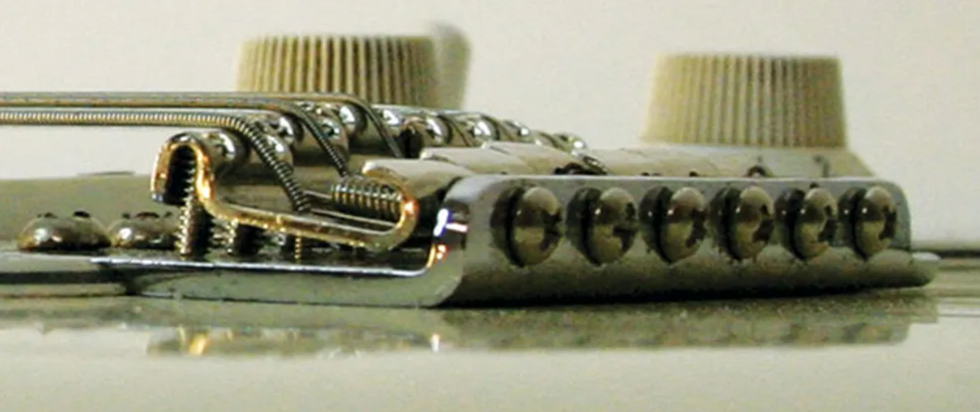
How the neck attaches to the body determines the playability of any guitar, and it’s one of the most overlooked issues when buying a used instrument. Here’s what you need to look for: If the bridge saddles are as low as they can go but the action is still too high, the guitar has an excessively low neck angle. Conversely, if the saddles are adjusted as high as they can go (Photo 4), yet the action is still too low, the neck angle is too high.
Either way, the guitar will need to have its neck angle reset to play well. For an electric guitar with a bolt-on neck, it’s not an expensive repair—perhaps only a little more than a typical setup. However, if the guitar has a set neck (i.e., the neck is glued into the body), changing the neck angle is very expensive. In the latter instance, unless the guitar is worth a lot of money, it’s not cost effective to reset the neck.
Hardware.
If you know what to look for, inspecting the hardware is easy. At first glance you can tell if the plating is in good condition. Beyond that, it’s a good idea to closely inspect the condition of the adjustment screws in the bridge, the nuts and washers that hold the knobs, any neck mounting hardware, the screws, washers, and nuts that secure the tuning keys, and so on. Look for stripped threads, rounded nuts, and missing screws.
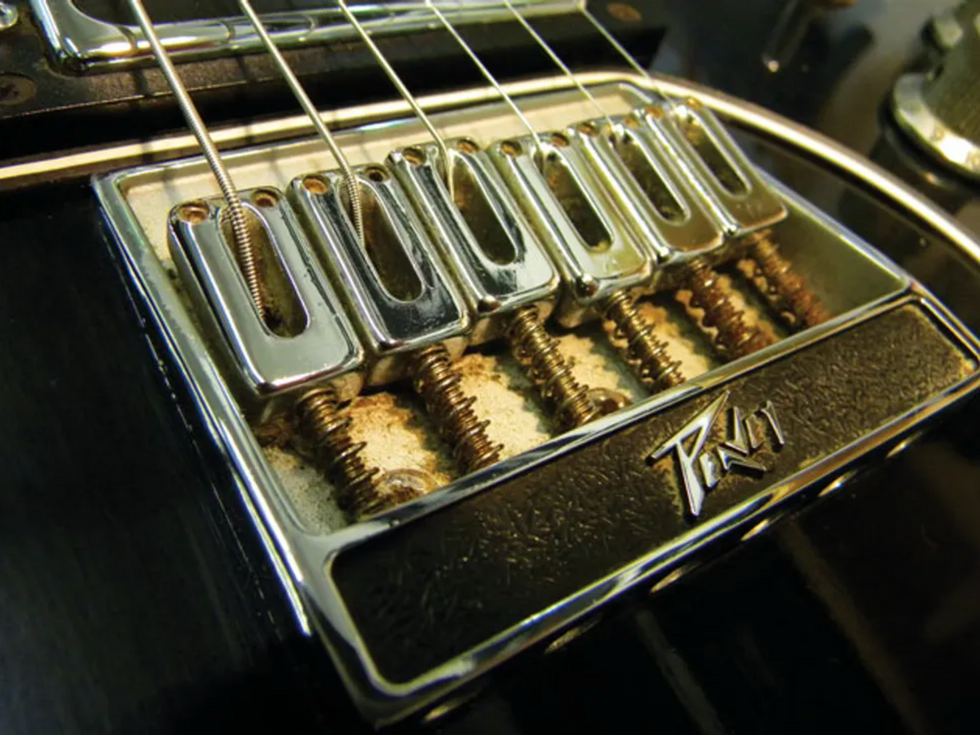
Is there any rust? Recently I had an old electric come into the shop with several rusted screws in the bridge (Photo 5). They were completely seized up, and to extract the screws I had to first soak the saddles in oil, and then apply a lot of heat. (To prevent this from happening to your guitar, wipe off the hardware with a soft cloth after each playing session, and use Q-tips to remove sweat and dirt when it builds up in hard-to-reach areas.)
If the guitar has a Tune-o-matic-style bridge, check for what I call “smiling bridge syndrome.” This occurs when the bridge frame starts to sag or collapse between the bridge posts. If the 3rd and 4th strings are lower than the 1st and 6th, the bridge will need to be replaced.
Electronics.
With the guitar plugged in, rotate the volume and tone knobs while listening for scratchy pots. Then test the switches and gently jiggle the cable at the output jack. If the signal coming out of the guitar is noisy or intermittent, this will require further testing and repair. In some cases, you can fix a noisy pot or switch by spraying it with contact cleaner, followed by compressed air. But if there’s serious corrosion, scratchy pots and switches will need to be replaced. Though pots, switches, and jacks are relatively inexpensive, the labor can add up.
Tip: A previous owner may have changed out the pickups but not wired them correctly so they’re in phase with each other. If the combination of any two pickups sounds thin, bright, and really annoying, then they’re probably out of phase. This can be fixed, but you’ll be paying for the time it takes to disassemble and rewire a guitar.
To summarize:
When buying a used electric guitar, always weigh the cost of repairs against the instrument’s market value. Most used electric guitars are going to need some repairs or a setup, and buying a guitar that needs a little work isn’t necessarily a bad deal, as long as you come out ahead when you add bench time and parts to the selling price. Before you buy an instrument, research its street value and try to get an estimate on repair costs from a qualified repair tech or luthier.
[Updated 1/12/22]


